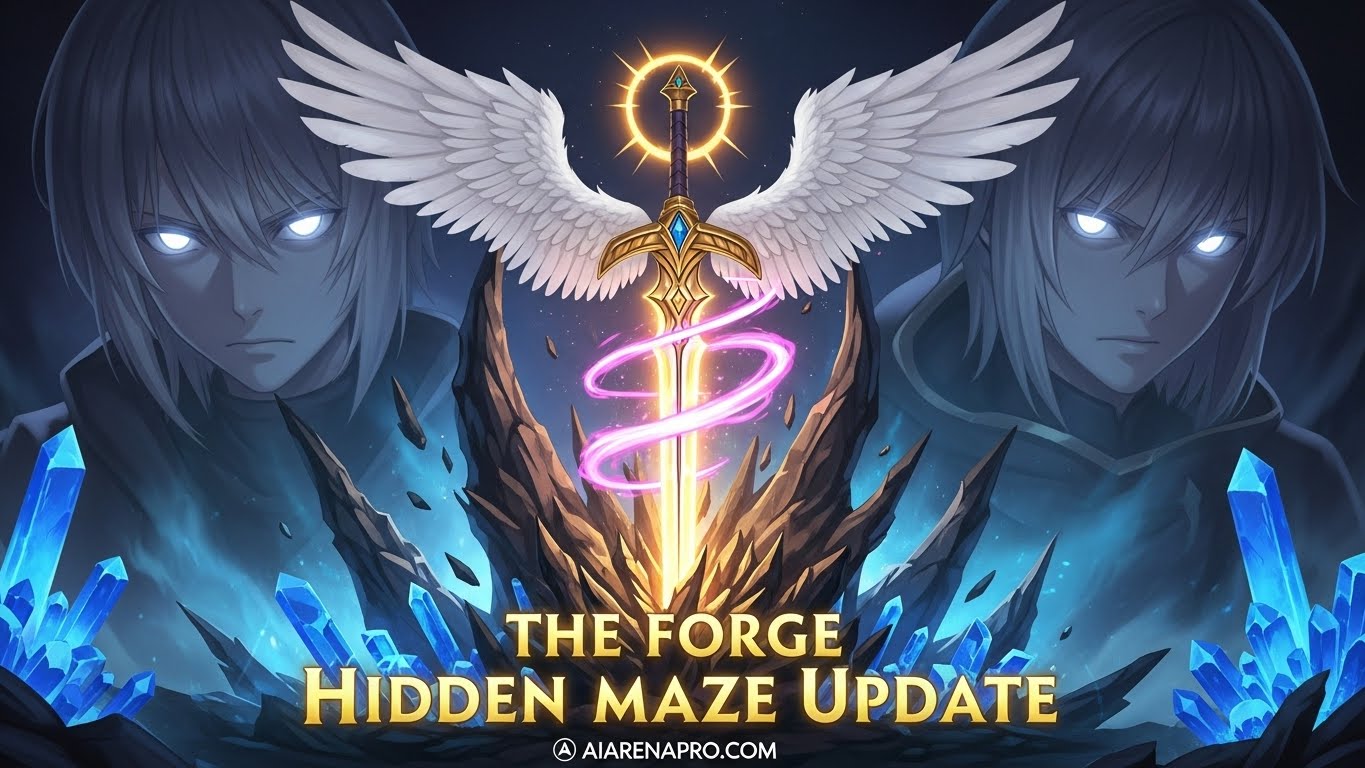

When discussing open world games with extraordinary attention to detail, Red Dead Redemption 2 consistently emerges as the undisputed champion. According to former Rockstar designer Ben Hinchliffe, an astounding 99% of the game’s meticulously crafted details remain unnoticed by the average player, encompassing everything from subtle horse muscle animations to complex weather systems that dynamically influence NPC behavioural patterns.
Throughout two decades of gaming exploration, I’ve traversed countless digital landscapes, yet only a handful have compelled me to pause mid adventure to marvel at their exceptional craftsmanship. Whether it’s observing mud realistically adhering to Arthur Morgan’s boots in Red Dead Redemption 2 or discovering that The Witcher 3’s NPCs maintain comprehensive daily schedules, these titles exemplify the zenith of virtual world construction.
| Detail Category | Key Examples | Gaming Impact |
|---|---|---|
| Environmental Systems | Weather mechanics, destructible environments, persistent player traces | Heightened immersion |
| Character Animation | Facial expressions, contextual responses, unique idle behaviors | Convincing NPCs |
| Hidden Content | Easter eggs, secret areas, community driven discoveries | Extended replayability |
| Audio Design | 3D spatial audio, adaptive music, environmental acoustics | Atmospheric richness |
Launching Grand Theft Auto III in 2001 introduced the revolutionary concept of a living, breathing urban environment. Today’s open world experiences feature worlds so intricately detailed that development teams invest years perfecting elements most players will never encounter. This progression from basic sandbox environments to sophisticated ecosystems represents one of gaming’s most remarkable technical accomplishments.
The transformation has been extraordinary. While early open world titles prioritized scale and player freedom, contemporary games obsess over microscopic details. CD Projekt Red assembled a global team of 1,500 developers for The Witcher 3, crafting a 450,000 word script featuring 950 speaking characters. This level of detail investment has established the new benchmark for AAA open world development.
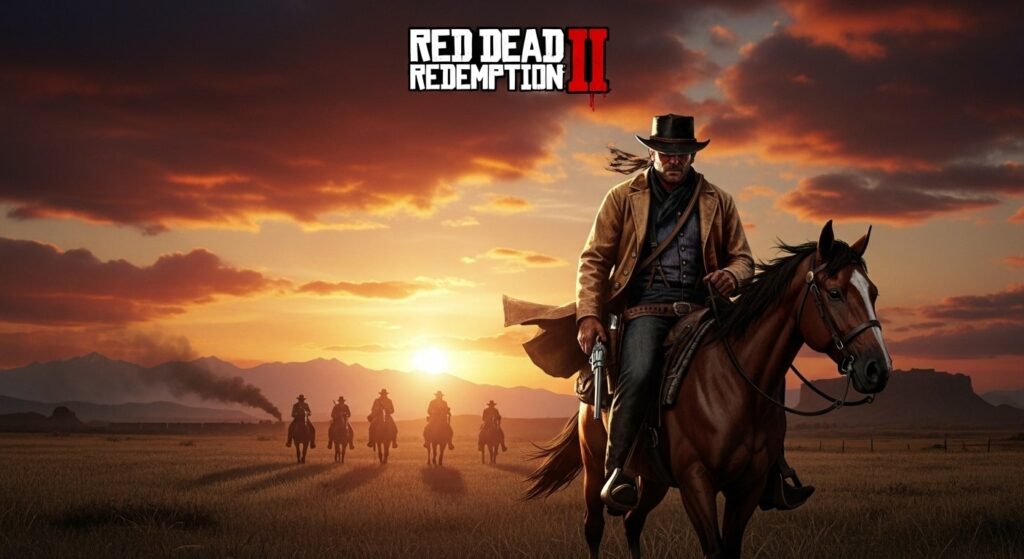
After investing over 300 hours in Red Dead Redemption 2’s world, I continue uncovering new intricacies. The game’s environmental attention borders on obsession. Snow deforms authentically beneath your horse’s hooves, creating distinctive patterns that endure. Mud accumulates on Arthur’s clothing based precisely on his traversal paths, and you can observe it naturally drying and flaking away over time.
What truly distinguishes RDR2 is how these details enhance narrative depth. I once tracked an NPC for twenty minutes, witnessing their complete workday routine: finishing tasks, visiting the local saloon, engaging in a drunken altercation, and stumbling homeward. This wasn’t scripted content merely the game’s systems generating spontaneous storytelling through remarkable attention to behavioural routines.
Rockstar Technical Director Phil Hooker disclosed that the animation system underwent complete reconstruction, noting that “the animation volume required for individual character responses exceeded any previous Rockstar production.” This sophistication manifests in every interaction from Arthur’s weight affecting his movement mechanics to horses developing distinct personalities based on player treatment.
The wildlife ecosystem alone showcases unprecedented detail. Predators pursue prey following authentic patterns, scavengers arrive at carcasses in specific sequences, and weather variations influence animal behaviour. I’ve observed eagles snatching fish from rivers and bears marking territorial boundaries on trees details existing purely for immersive authenticity.

Upon first entering Novigrad in The Witcher 3, the city’s complexity proved overwhelming. Every NPC maintains daily schedules, merchants adjust pricing based on local events, and the entire economic system responds to player actions. The game’s script, localized across 15 languages, creates a world where even minor characters feel completely realized.
The cultural detail particularly impresses. Each region features distinct architectural styles, local customs, and region specific Gwent cards. Skellige authentically captures Nordic aesthetics, while Toussaint perfectly embodies fairy tale France. This cultural authenticity extends to minute details notice how NPC clothing reflects both social status and regional origins.
Years post release, the community continues discovering hidden details. I recently discovered that certain rare flowers bloom exclusively during specific weather conditions at particular times. There’s a concealed serial killer storyline that unfolds entirely through environmental clues. These discoveries maintain world vitality long after completing the main narrative.

Los Santos remains gaming’s most convincing metropolitan simulation. Throughout countless exploration hours, I’ve noticed traffic patterns shifting based on time and location. Rush hour generates realistic congestion, while late night streets empty except for emergency vehicles and night shift workers. The city’s ecosystem operates independently of player involvement.
The in game social media integration continues to amaze. NPCs capture selfies at landmarks, post on virtual social networks, and react to events through their devices. This prescient detail, implemented in 2013, remarkably anticipated our real world social media obsession.
The game’s stock market responds to player actions and world events, creating a functioning economy. I’ve manipulated stock prices through strategic mission choices and random destruction acts. Even the property market fluctuates based on area crime rates and development. These interconnected systems create emergent gameplay opportunities rewarding careful observation.
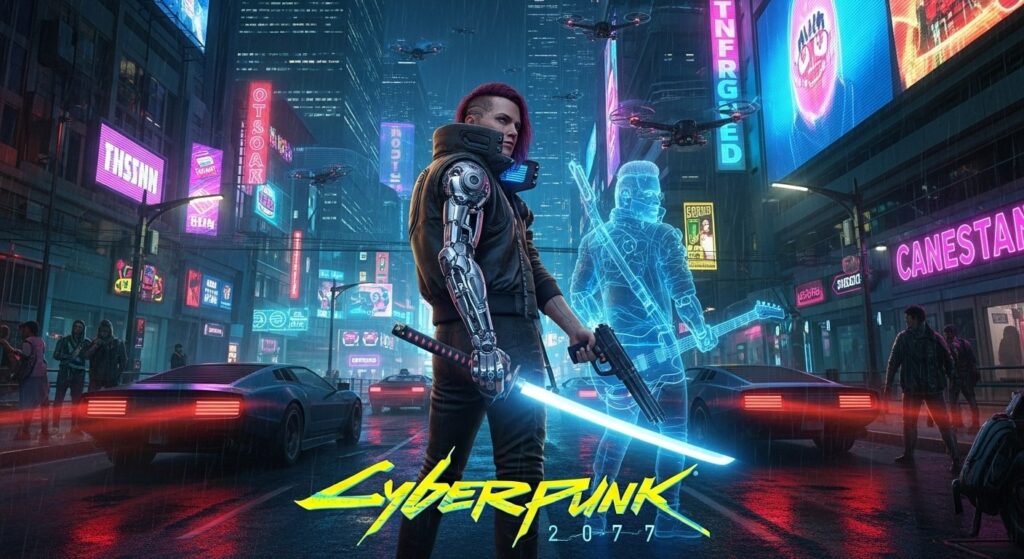
Following its troubled debut, Cyberpunk 2077 has evolved into one of gaming’s most detailed urban environments. The Phantom Liberty expansion and 2.0 update introduced detail layers rivalling any open world title. Night City now pulsates with life crowds react dynamically to violence, police pursuits feel authentic, and the verticality creates genuinely three dimensional urban space.
Environmental storytelling in every apartment and alley constantly impresses. Emails on abandoned computers tell complete stories, graffiti reveals gang territories, and advertisements evolve based on story progression. The city’s various districts feel culturally distinct, from Japantown’s neon excess to Pacifica’s abandoned combat zones.
The game’s crowd AI now creates convincing urban density. NPCs engage in conversations reflecting current events, street vendors sell district appropriate merchandise, and fashion varies between neighbourhoods. Recent updates added car chases where police units coordinate realistically, requesting backup and establishing roadblocks based on threat assessment.
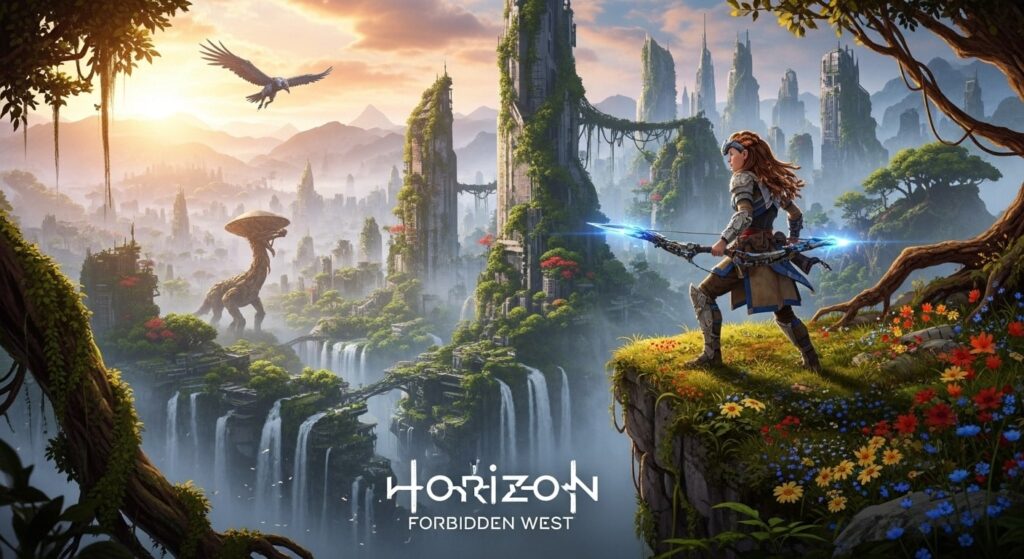
Guerrilla Games’ natural detail attention establishes new standards. Every plant species in Forbidden West serves a purpose some provide crafting materials, others indicate nearby machine locations, and many simply make the world feel authentically alive. I’ve spent hours photographing the game’s incredibly detailed flora and fauna.
The machine ecosystem represents brilliant world building through detail. Each machine type fulfils an ecological role, from Grazers converting vegetation to biofuel to Glint hawks scavenging destroyed machinery. Observing these interactions unfold naturally creates wonder moments that scripted events could never achieve.
The development team consulted cultural experts to authentically represent various tribal societies. This attention appears in clothing patterns, architectural styles, and belief systems. The Tenakth’s warrior culture contrasts beautifully with the Utaru’s agricultural focus, with details extending to their tools, weapons, and daily routines.
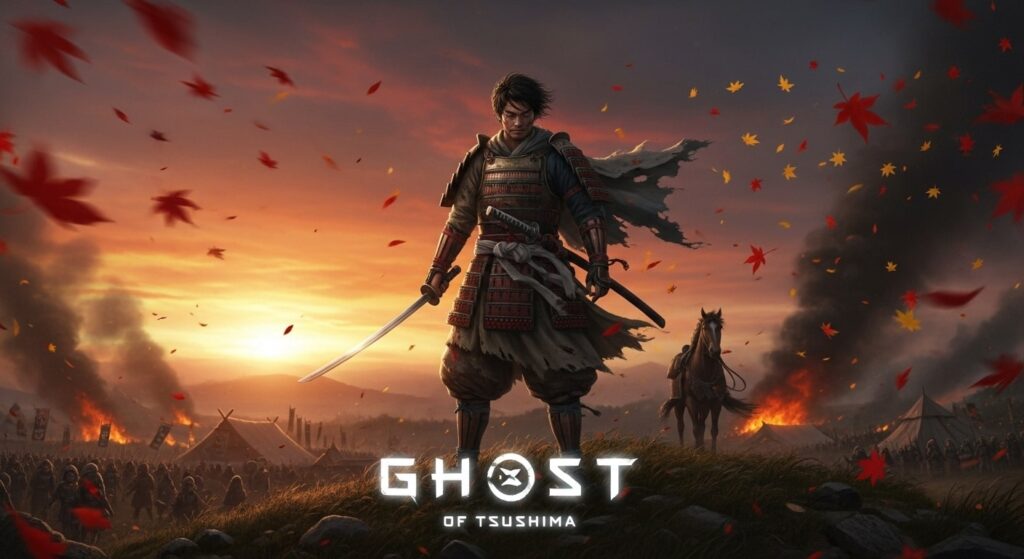
Sucker Punch Productions’ dedication to historical accuracy while maintaining artistic vision impressed me throughout Jin Sakai’s journey. The game features accurate 13th century architecture, authentic sword fighting stances based on actual martial arts, and historically appropriate horse breeds. Yet it balances realism with stylized elements like guiding wind and dramatic standoffs.
The natural world responds to your presence with incredible subtlety. Foxes lead you to hidden shrines, golden birds guide you to secrets, and even falling leaf direction can reveal hidden paths. This organic navigation system eliminates UI clutter while preserving period atmosphere.
The haiku composition mechanic exemplifies thoughtful detail implementation. When creating poems, the camera focuses on environmental elements matching your chosen words selecting “death” might highlight withered flowers while “strength” draws attention to ancient trees. This marriage of gameplay and environmental detail creates genuinely contemplative moments.
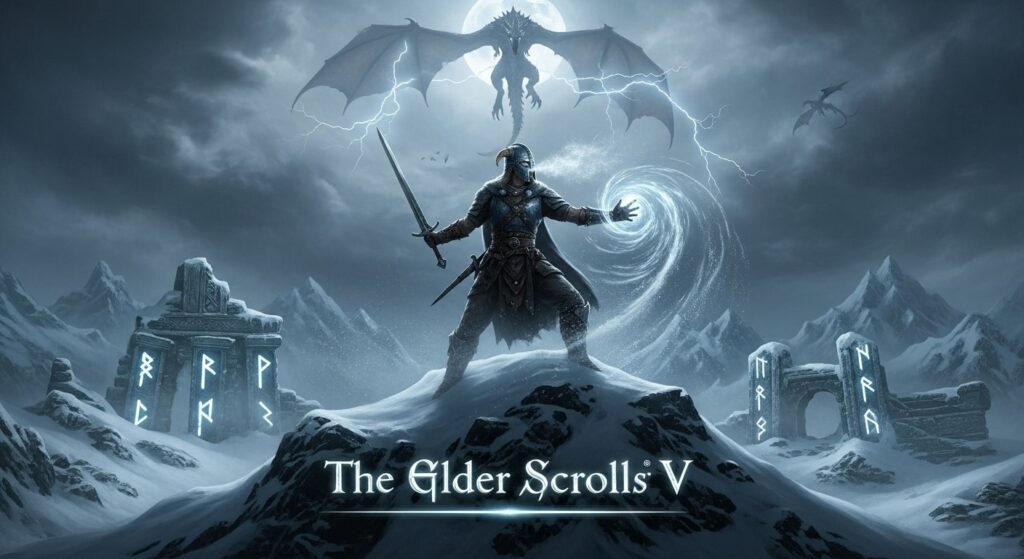
Even after 13 years, Skyrim’s environmental storytelling remains unparalleled. I still discover new stories told entirely through object placement a skeleton reaching for a healing potion, a love letter near twin graves, or carefully arranged ritual sites. These wordless narratives reward careful exploration and imagination.
The game’s literature system deserves special recognition. With hundreds of readable books containing complete stories, histories, and skill instructions, Bethesda created an entire lore library. I’ve spent entire sessions reading, discovering connections between seemingly unrelated quests through obscure historical texts.
The modding community has exponentially enhanced Skyrim’s detail. From realistic needs systems to seasonal changes, mods maintain the game’s freshness. My current playthrough includes over 200 mods adding everything from snow footprints to regional weapon variations based on local smithing traditions.
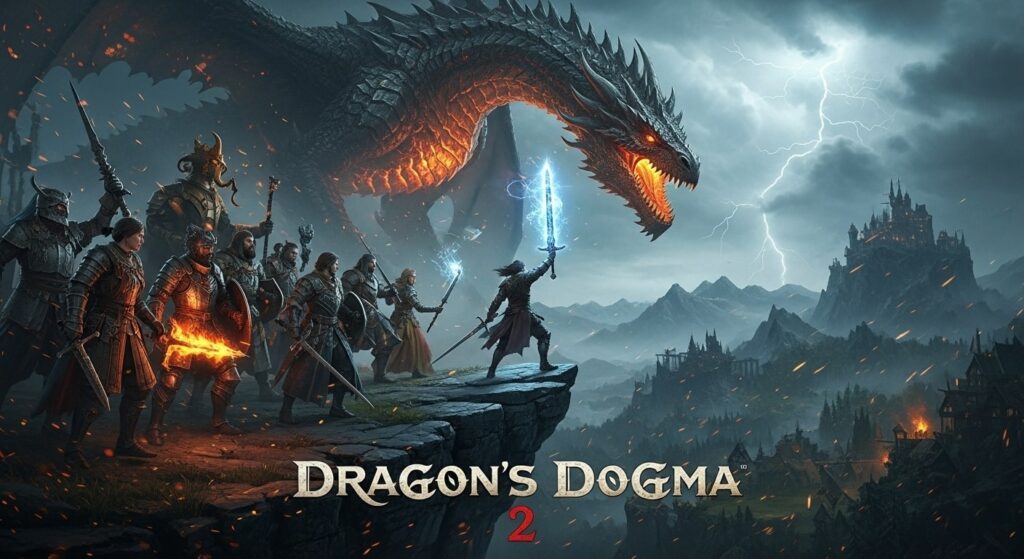
Capcom’s recent sequel introduced the most impressive NPC system I’ve encountered. The Pawn system creates AI companions that learn from community wide player behaviour. My main Pawn developed unique combat preferences based on my playstyle, then shared those tactics when hired by other players.
The game’s day night cycle affects everything from merchant availability to monster spawns. Certain quests only trigger under specific conditions I missed several on my first playthrough simply by not visiting locations at appropriate times. This creates a world feeling alive rather than waiting for player interaction.
Dragon’s Dogma 2’s physics system creates incredible emergent moments. Large monsters deform terrain, fire spreads realistically through vegetation and wooden structures, and water actually extinguishes character flames. I once escaped a griffin by igniting a field, using smoke for cover while fire forced its relocation.
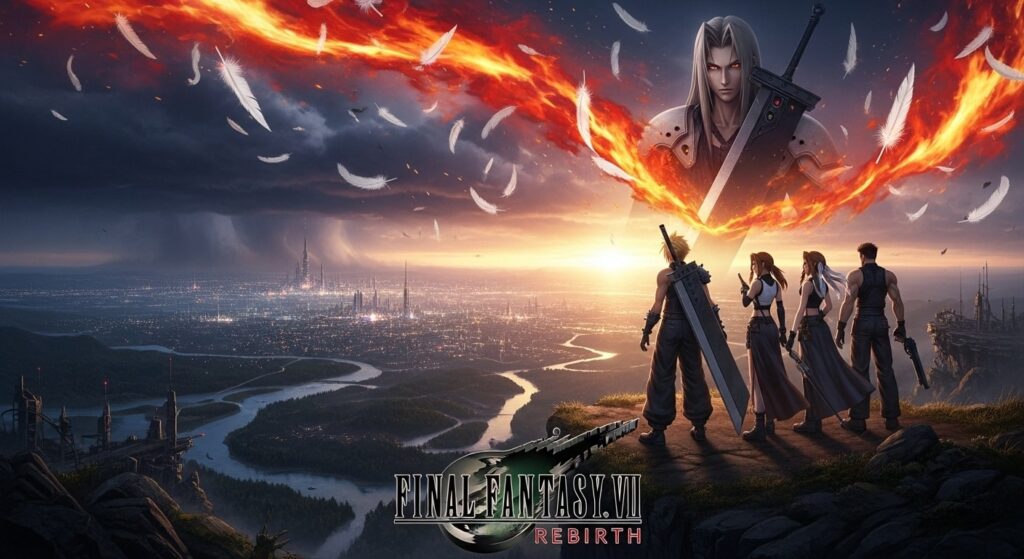
Square Enix chose detail density over raw size, creating smaller but incredibly rich zones. Each area feels hand crafted with unique environmental puzzles, hidden materiel, and lore snippets expanding the original game’s story. The development team added historical markers explaining Shinra’s industrialization impact, creating environmental commentary through world design.
The character interaction system constantly impresses. Party members comment on everything from weather to combat performance, with reactions changing based on relationship levels. Cloud’s gradual personality shift feels organic, reflected in subtle animation changes and dialogue delivery.
The dynamic music system seamlessly transitions between exploration and combat themes while maintaining melodic continuity. Each region features unique instrumental arrangements of classic themes. I noticed that chocobo themes change based on terrain the grassland version differs from mountain arrangements, adding personality to traversal.

Ubisoft’s historical accuracy commitment through Discovery Modes has established new educational gaming standards. I’ve used these modes for virtual tours of ancient Egypt, Greece, and Viking age England. The attention to architectural accuracy, period appropriate clothing, and daily life details makes these games valuable historical resources.
The upcoming Assassin’s Creed Shadows promises dynamic seasons affecting gameplay and visual presentation. Based on preview footage, cherry blossoms will bloom and fall realistically, snow will accumulate on rooftops affecting stealth approaches, and seasonal festivals will alter NPC behavior patterns.
Each game involves extensive historian and cultural expert consultation. Languages are period appropriate, architectural details match archaeological records, and even background NPC conversations reflect historical social structures. This commitment elevates the series beyond entertainment into cultural preservation.
Indie developers often achieve incredible detail through focused scope. Outer Wilds creates a miniature solar system where every element serves the core mystery. The game tracks knowledge rather than character progression, making discovery itself the reward. This design philosophy creates meaningful detail rather than detail for its own sake.
Return of the Obra Dinn demonstrates how artistic detail can surpass photorealism. Using distinctive 1 bit art style, Lucas Pope created one of gaming’s most atmospheric experiences. Every character has complete backstories revealed through careful investigation, creating narrative puzzles where detail observation becomes gameplay.
Modern game engines enable detail levels impossible just years ago. Unreal Engine 5’s Nanite technology allows film quality assets without performance penalties. Games using this technology feature unprecedented geometric density individual pebbles cast accurate shadows and distant mountains maintain full detail rather than using LOD systems.
However, detail comes with costs. Red Dead Redemption 2’s development required eight years with a reported budget exceeding $500 million. This investment level raises sustainability questions and whether such detail is necessary for engaging gameplay. Developers must balance detail with performance optimization.
Machine learning increasingly generates detailed content. No Man’s Sky uses procedural generation to create diverse planets with unique ecosystems. While initially criticized for repetition, continuous updates have added detail layers making each planet feel distinct. The game now features underground cave systems, ocean depths, and atmospheric flight dynamics all generated algorithmically.
Gaming communities excel at uncovering hidden details. Gaming traditions established by classic titles of secrets and easter eggs have expanded exponentially in modern games. GTA V’s Mount Chiliad mystery engaged players for years, while Elden Ring’s community collaborated to decode cryptic lore through item descriptions and environmental clues.
I particularly enjoy how developers acknowledge dedicated explorers. The Witcher 3 includes numerous pop culture references hidden in side quests, while Cyberpunk 2077 features an entire hidden storyline involving a conspiracy theorist that only triggers after specific conditions. These rewards for thorough exploration create additional value for detail oriented players.
Developers often hide personal touches in their worlds. Skyrim includes a hidden room containing oversized development tools, Horizon Zero Dawn features touching tributes to deceased developers, and Red Dead Redemption 2 includes UFO encounters for persistent explorers. These human touches remind us that real people crafted these virtual worlds with dedication.
Detail creates immersion not through individual elements but through consistency. When everything from physics to NPC behavior follows logical rules, our brains accept the virtual world as temporarily real. I’ve found myself checking weather forecasts in Red Dead Redemption 2 before traveling, just as I would in reality.
This psychological investment explains why seemingly minor details matter significantly. A single floating object or NPCs walking through walls can instantly shatter immersion. Conversely, consistent detail implementation makes us forgive technical limitations because the world feels cohesive.
There’s ongoing debate about detail’s value versus development cost. Does knowing that RDR2’s horse anatomy responds to temperature enhance gameplay? Perhaps not directly, but such details contribute to overall craftsmanship that elevates the entire experience. It signals that developers cared about every aspect, encouraging deeper player engagement.
PC gaming often showcases the highest detail levels through superior hardware and modding support. Games like upcoming Kingdom Come Deliverance 2 will leverage high end PCs for enhanced texture detail, draw distances, and physics simulations impossible on consoles. Ray tracing transforms how light interacts with detailed environments, creating realistic reflections and shadows that enhance immersion.
The modding community pushes detail even further. Skyrim mods add everything from realistic water physics to 8K texture packs. Cities: Skylines players create impossibly detailed urban recreations. This platform flexibility allows detail enthusiasts to customize experiences beyond developer intentions.
Console exclusives often demonstrate platform specific detail optimizations. The PlayStation 5’s SSD enables Ratchet & Clank: Rift Apart’s instant world transitions, maintaining incredible detail during dimensional shifts. Modern multiplayer PS5 games leverage the Dual Sense controller’s haptic feedback for detailed tactile sensations feeling individual raindrops or surface textures through vibration.
Xbox Series X’s raw power enables Microsoft Flight Simulator to stream real world data creating the most detailed earth simulation ever. Flying over your actual house, rendered from satellite imagery and enhanced with AI, represents a detail achievement impossible without cloud computing integration.
Artificial intelligence will revolutionize open world detail. Imagine NPCs with genuine memories of player interactions, evolving relationships, and emergent storylines. Current games script these elements, but AI could generate unique narratives for every playthrough. Each player’s world would develop differently based on their actions, creating truly personalized experiences.
Procedural generation will become more sophisticated, creating detailed worlds that feel hand crafted. Combining artist created hero assets with AI generated variations could produce infinite detail without infinite development time. This technology could make every building enterable, every NPC unique, and every playthrough surprising.
VR demands different detail priorities. Visual fidelity matters less than interactive consistency players expect to touch, manipulate, and examine everything closely. Half Life: Alyx demonstrated how VR changes detail requirements, featuring fully interactive environments where players can draw on windows and examine objects from any angle.
Future VR might incorporate additional senses. Haptic suits could simulate temperature and texture, while scent dispensers could add olfactory detail. These technologies would create unprecedented immersion levels, making virtual worlds increasingly indistinguishable from reality.
To fully appreciate these detailed worlds, I recommend slowing down. Sprint less, explore more. Use photo modes to examine environmental art. Read in game texts and eavesdrop on NPC conversations. Cross platform gaming allows comparing how different systems handle detail, revealing technical achievements and compromises.
Join communities dedicated to discovery and exploration. Share findings, participate in mystery solving, and contribute to wikis documenting hidden content. This collaborative exploration enhances appreciation for developer effort while creating social connections through shared discovery.
Vote with your wallet for games prioritizing detail and craftsmanship. Support developers who delay releases for polish rather than rushing unfinished products. Engage with post launch content that adds detail rather than just new areas. Write reviews highlighting attention to detail, signaling to developers that players value this investment.
Consider exploring immersive MMORPGs that emphasize world building detail over fast paced action. These games often reward patient exploration and demonstrate how detail enhances long term engagement.
Which open world game has the most realistic graphics currently?
While graphics don’t equal detail, Horizon Forbidden West and Red Dead Redemption 2 currently lead in photorealistic presentation. However, artistic games like Ghost of Tsushima prove that stylized graphics can convey equal or greater detail through art direction rather than raw polygon counts.
Do detailed open world games require powerful hardware?
Not necessarily. Many detailed games offer scalable settings allowing enjoyment across hardware ranges. The Witcher 3 runs on Nintendo Switch while maintaining its detailed quest design and world building. Focus on games matching your platform’s capabilities rather than chasing maximum settings.
How do developers decide which details to include?
Developers prioritize details supporting core gameplay and narrative themes. Red Dead Redemption 2’s hunting details reinforce its survivalist themes, while Cyberpunk 2077’s advertising saturation emphasizes corporate dystopia. Details that enhance player experience or support world consistency receive priority over purely cosmetic additions.
What makes environmental storytelling effective in open world games?
Effective environmental storytelling requires consistency, subtlety, and reward for observation. Objects should tell stories through logical placement, wear patterns, and contextual relationships. The best examples let players piece together narratives themselves rather than explicitly explaining everything, creating personal discovery moments.
Are there diminishing returns on adding more detail to games?
Yes, but the threshold varies by game type and audience. Simulation fans appreciate extreme detail, while action focused players might prefer polished core mechanics. The key is ensuring details enhance rather than distract from intended experiences. Meaningful detail that affects gameplay or storytelling provides more value than purely decorative elements.
After exploring countless virtual worlds, I’m convinced that attention to detail separates good open world games from unforgettable experiences. These games represent thousands of developers pouring passion into creating believable alternate realities. From Red Dead Redemption 2’s 99% unseen details to The Witcher 3’s massive script, these achievements push gaming toward its potential as the ultimate storytelling medium.
The future promises even more detailed worlds as technology advances and developer tools improve. Yet technology alone doesn’t create memorable experiences it’s the human touch, the developer who adds a readable diary to an abandoned shack or ensures footprints appear correctly in snow, that transforms code into magic.
As we enter this new generation of gaming, I encourage everyone to slow down and appreciate these crafted worlds. Look closer, explore further, and share your discoveries. In doing so, we not only enhance our own experiences but also show developers that their attention to detail matters. These virtual worlds represent humanity’s newest form of artistic expression let’s give them the attention they deserve.

